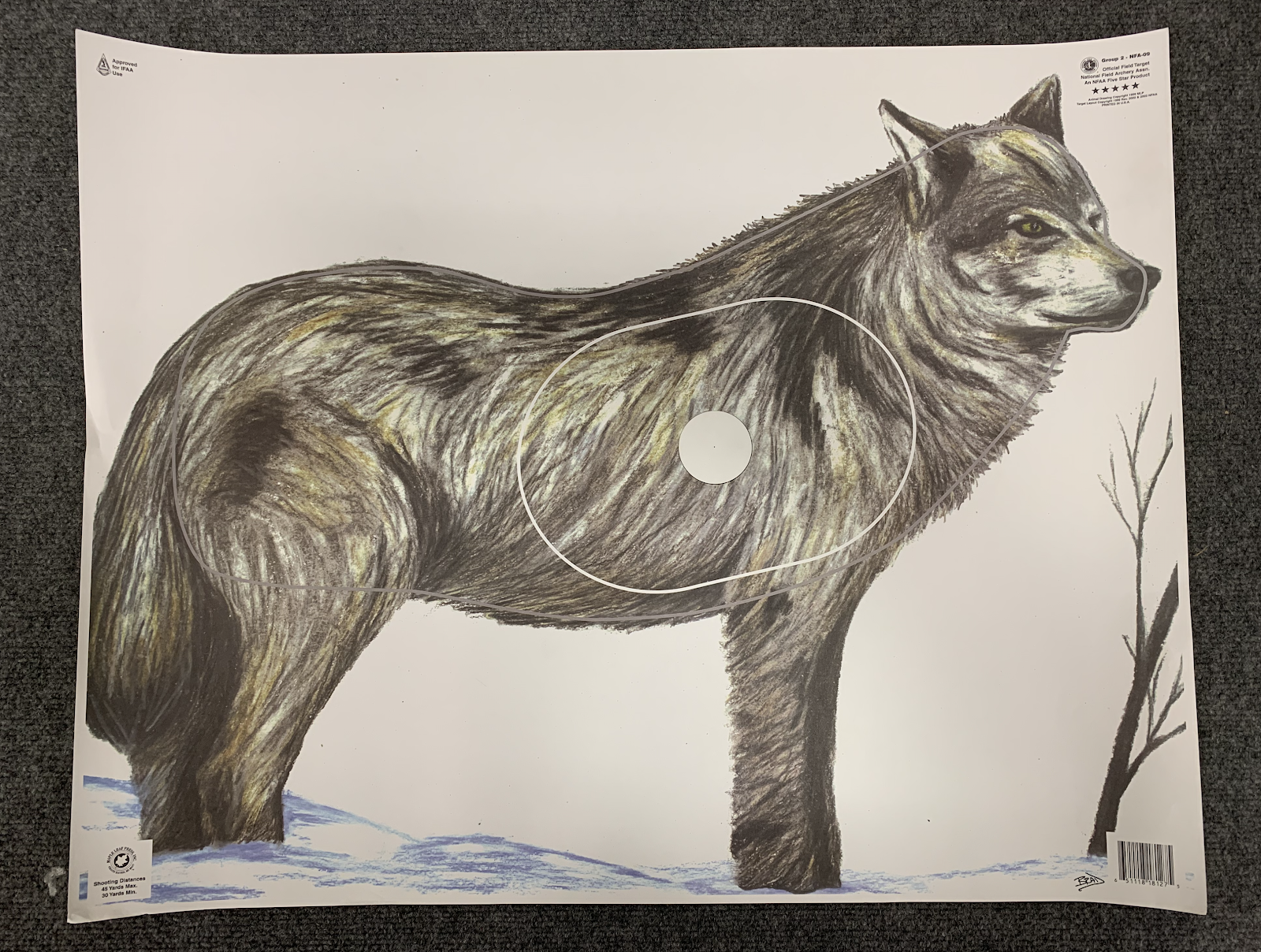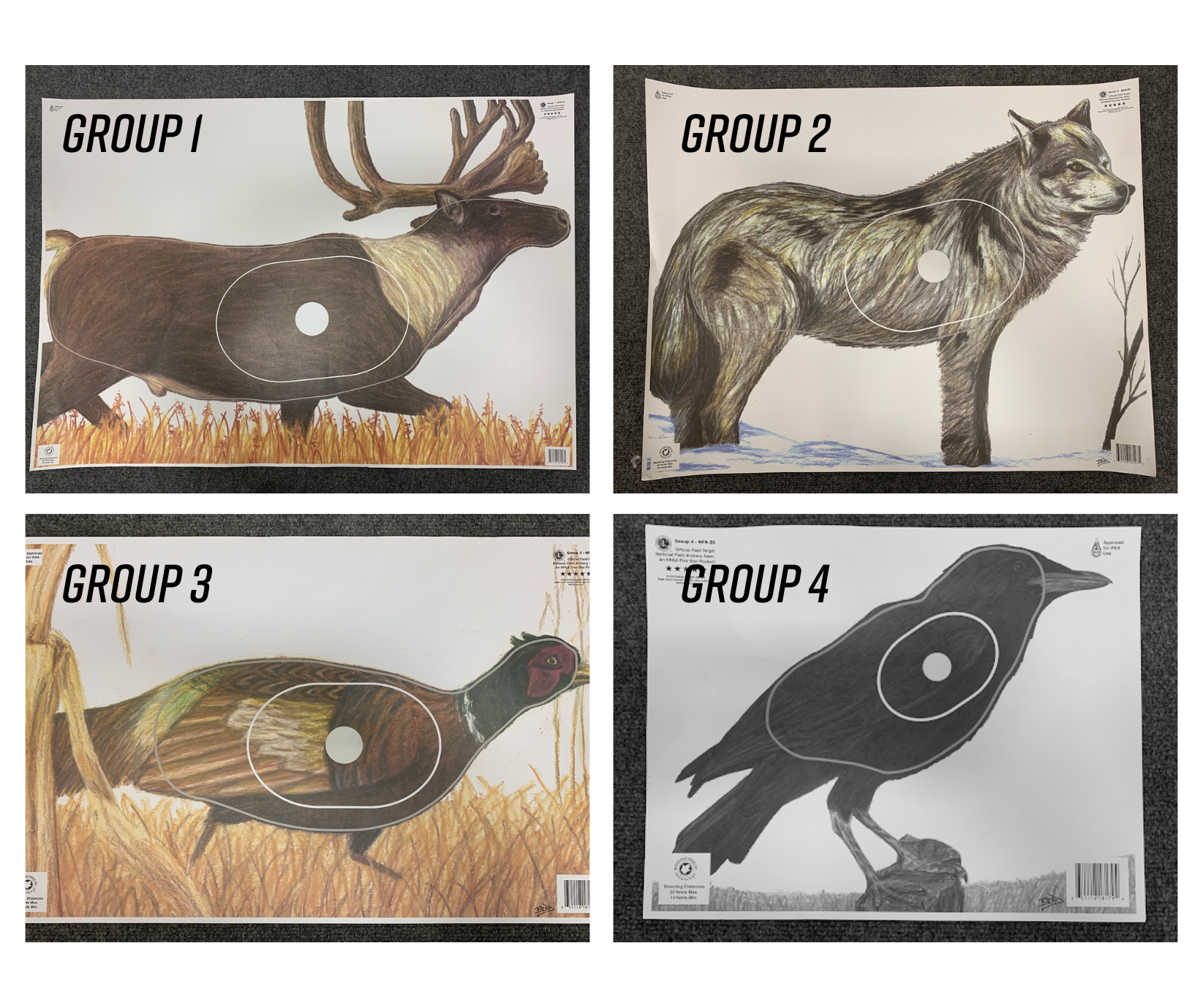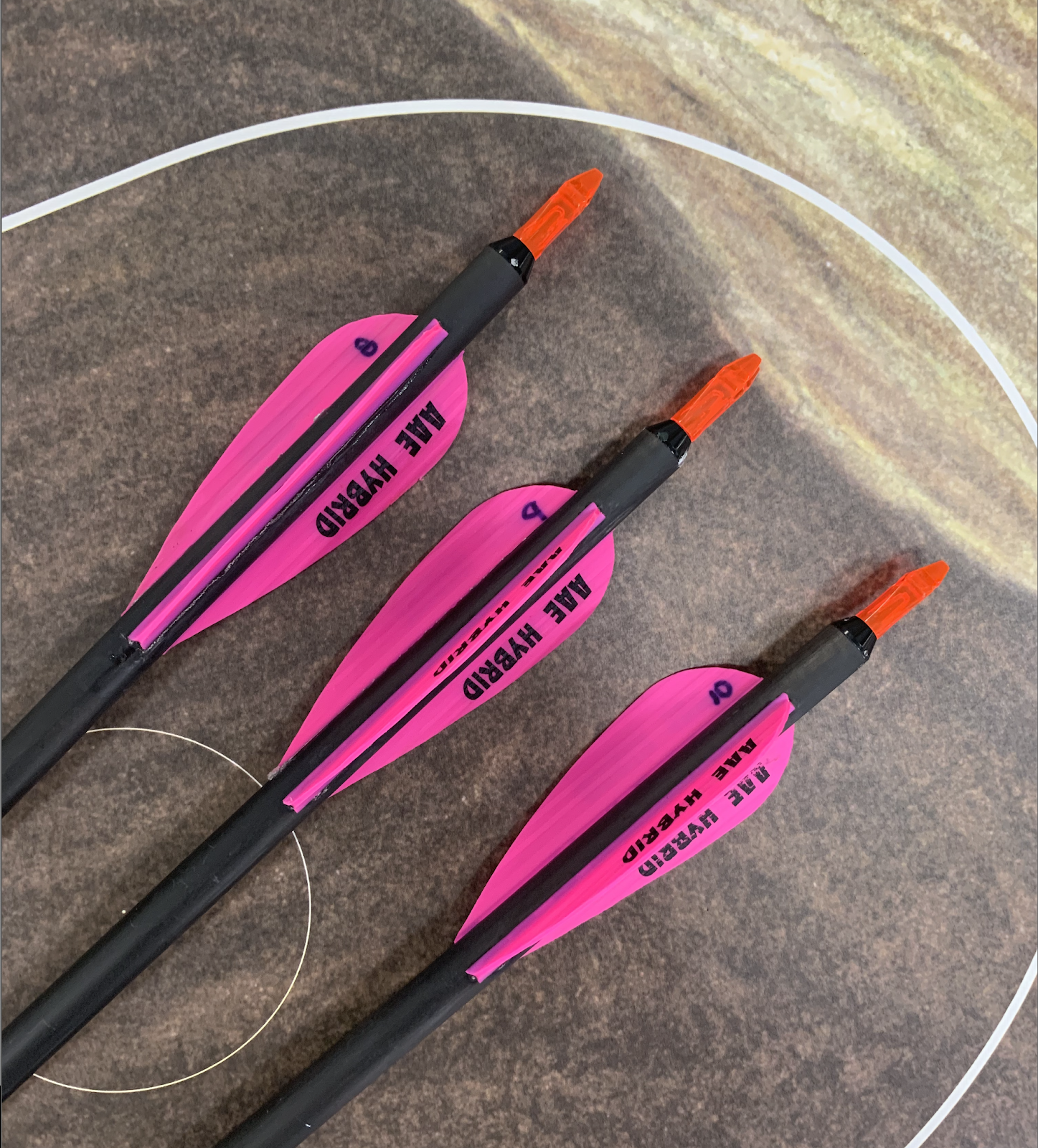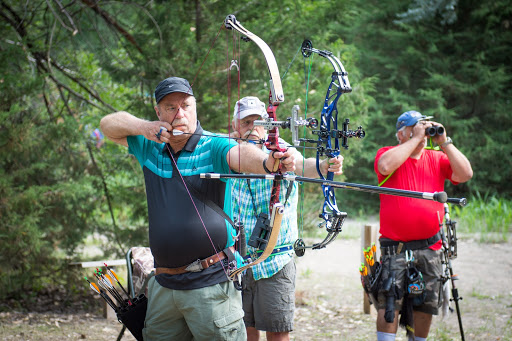NFAA News
Jul 02, 2019
Field Archery 101 - The Animal Round
The third and final format in the NFAA’s field target rounds is the Animal Round. Of the three styles—Field, Hunter, and Animal—many archers consider this one the most fun and exciting to shoot. Like the other two rounds, a full Animal Round consists of 28 targets. However, instead of the standard circular target faces, archers shoot at a variety of animal images, and the number of arrows per target is significantly reduced.

animal round scoring
Scoring works a little differently in the Animal Round. Instead of shooting four arrows per target, archers shoot a maximum of three. Each target face is an animal image with overlaid scoring zones. The rings are placed within the hide, hair, or feather line of the animal, and only arrows that touch those scoring rings earn points. If an arrow touches the animal image but does not reach a scoring ring, it is scored as a miss. To receive the higher point value, the arrow simply needs to touch the solid scoring line. When it comes to bonus dots, the arrow shaft must fully touch the dot to count for the next higher point value. Arrows touching the orientation line will not count for the higher value.
For the Animal Round, arrows must be individually numbered. This is important because of the unique shooting format. At each target, an archer starts with one arrow from the farthest stake for their class (as indicated on the target sign). If that arrow misses, the archer may shoot a second arrow from the next closest stake for their division. If the second arrow also misses, a third arrow can be taken from the closest stake. No archer is permitted to advance to the target and then return to the stake to shoot again in the event of a missed arrow.
The first arrow you shoot at each target has its own scoring values based on where it lands:
- Center dot: 21 points
- First scoring zone outside the dot (i.e., kill zone): 20 points
- Outermost scoring zone (i.e., wound zone): 18 points
- Missed entirely: move to a second arrow
If your first arrow hits a scoring zone, you don’t need to shoot any additional arrows at that target. A perfect round of first-arrow hits would give a maximum possible score of 588 points.
If your first arrow misses all scoring zones, you get a second attempt. For this shot, you move up to the next closest stake for your class (or stay at the same stake if there isn’t a closer one). The scoring values for the second arrow are slightly lower:
- Center dot: 17 points
- Inner scoring zone: 16 points
- Outermost scoring zone: 14 points
If your second arrow also misses, you’ll have a third and final chance to score on that target. The third and final arrow at each target has its own scoring values as well:
- Center dot: 13 points
- Inner scoring zone: 12 points
- Outermost scoring zone: 10 points
If the third arrow misses all scoring zones, no points are awarded for that target.
animal round targets
Unlike the Field and Hunter rounds, the shooting distances in the Animal Round can vary from course to course. However, the round does follow specific distance guidelines based on the target’s group size. While the Animal Round includes multiple animal images as target faces, the scoring ring sizes are divided into four categories, or groups, which determine the distances archers will shoot from.
group 1
The high scoring area of Group No. 1 (plus or minus 1/8") is 8 inches wide by 14 inches long with rounded ends. Targets in this group are the black bear, grizzly bear, deer, moose, elk, and caribou. A bonus 6.5 cm dot (valued one point) is located in the middle of the high scoring area and colored white on dark targets and black on light targets.
group 2
The high scoring area of Group No. 2 (plus or minus 1/8") is 6 inches wide by 10 inches long with rounded ends. Targets in this group are the small black bear, antelope, small deer, wolf, and mountain lion. A bonus 5 cm dot (valued one point) is located in the middle of the high scoring area and colored white on dark targets and black on light targets.
group 3
The high scoring area of Group No. 3 (plus or minus 1/8") is 4 inches wide by 6 inches long with rounded ends. Targets in this group are the coyote, raccoon, javelina, turkey, fox, goose, wildcat, and pheasant. A bonus 3.5 cm dot (valued one point) is located in the middle of the high scoring area and colored white on dark targets and black on light targets.
group 4
The high scoring area of Group No. 4 (plus or minus 1/8") is 2 inches wide by 3 inches long with rounded ends. Targets in this group are the turtle, duck, grouse, crow, skunk, woodchuck, jack rabbit, and rockchuck. A bonus 2 cm dot (valued one point) is located in the middle of the high scoring area and colored white on dark targets and black on light targets.

The following chart highlights the distances and target groups. Review Appendix 4: Range Captain's Staking & Target Guide from the NFAA Constitution & By-Laws for a detailed description of the required distances and target sizes for each division and round type.
Review Appendix 4: Range Captain's Staking & Target Guide from the NFAA Constitution & By-Laws for a detailed description of the required distances and target sizes for each division and round type.
general field archery shooting rules
Shooting positions
When shooting in a group, the archers in a typical foursome will mutually decide who shoots from which side of the stake. On targets 1 and 15, shooters will switch positions and order: those who shot first will shoot last, left-side shooters move to the right, right-side to the left, and top/bottom target shooters swap positions. For butts with multiple target faces, the first two shooters take the bottom targets, while side-by-side targets are assigned left and right to the corresponding archer.
Pass-Throughs & Bounce-Outs
Arrows that glance off the ground into the target do not count, though arrows that clearly hit an obstacle may be re-shot. Witnessed bounce-outs that appear to hit a scoring area can also be re-shot. Pass-through arrows may be carefully pushed back through the target to score, but they cannot be removed and reinserted. Arrows believed to have passed through the target may be re-shot with marked arrows, but will not count if the originals are found in the butt. If the target captain rules that a pass-through is obvious and unscoreable, the archer may re-shoot from the designated distance.
Excess or Omitted Arrows
Shooting more than the prescribed number of arrows results in a penalty of one scoring ring per extra arrow, and the highest-value excess arrows will not count. If an archer shoots fewer arrows than required in an end, they may shoot the remaining arrows only if the omission is noticed before advancing to the target. Otherwise, the omitted arrows are scored as misses.
Emergencies & Equipment Failures
An archer who leaves the range for reasons other than an emergency or equipment failure may return to their group to complete the unfinished or subsequent targets, but any arrows missed during their absence cannot be made up. If the absence is due to an emergency or an equipment failure, the archer may reshoot missed targets under the supervision of a tournament official. In the case of an equipment failure, the archer is allowed up to 45 minutes to make repairs, with the restriction that only one equipment failure is permitted per archer per day.
closing summary
To dive deeper into the other formats, be sure to check out our other Field Archery 101 blogs on the Field Round and Hunter Round. Together, these three guides provide a complete introduction to the fundamentals of NFAA field archery. If you prefer to watch a video summary the NFAA Animal Round, click HERE.
Please note, this blog provides only a summary of the rules for the Animal Round and is not a complete list. For the full and official rules, review the NFAA Constitution and By-Laws.


